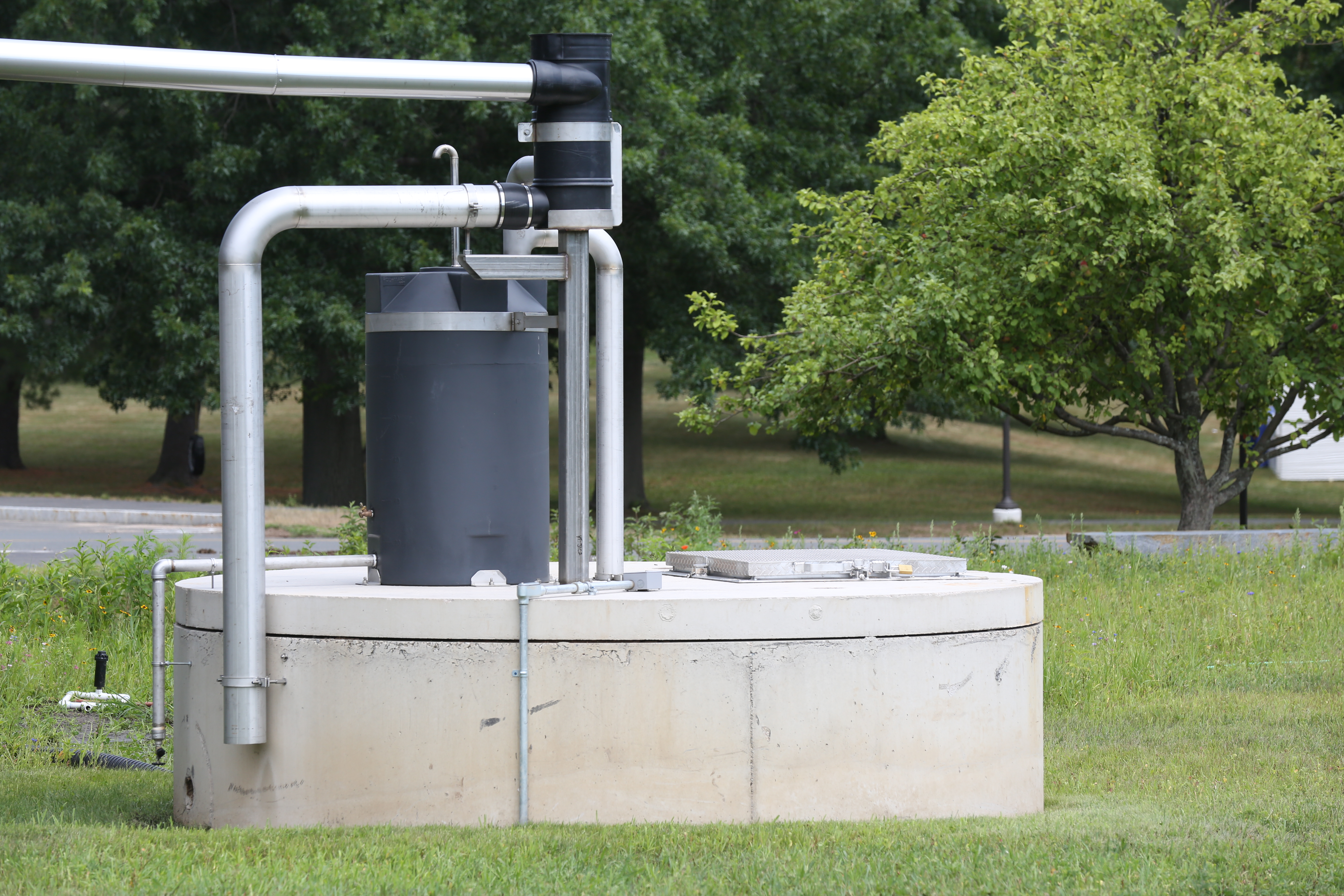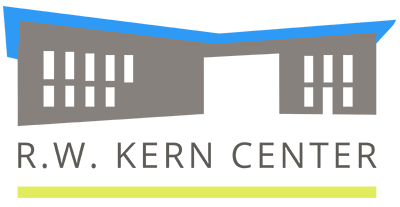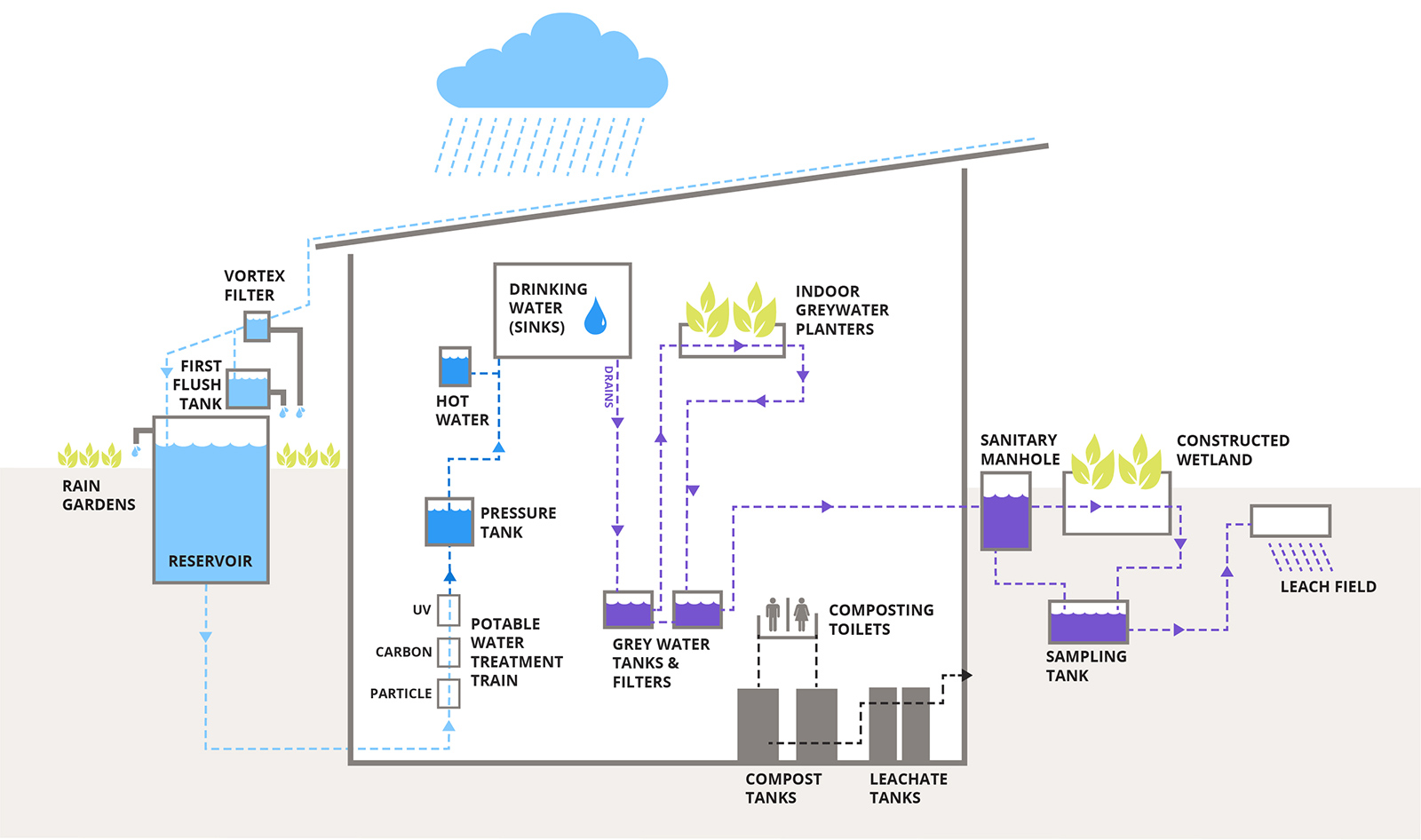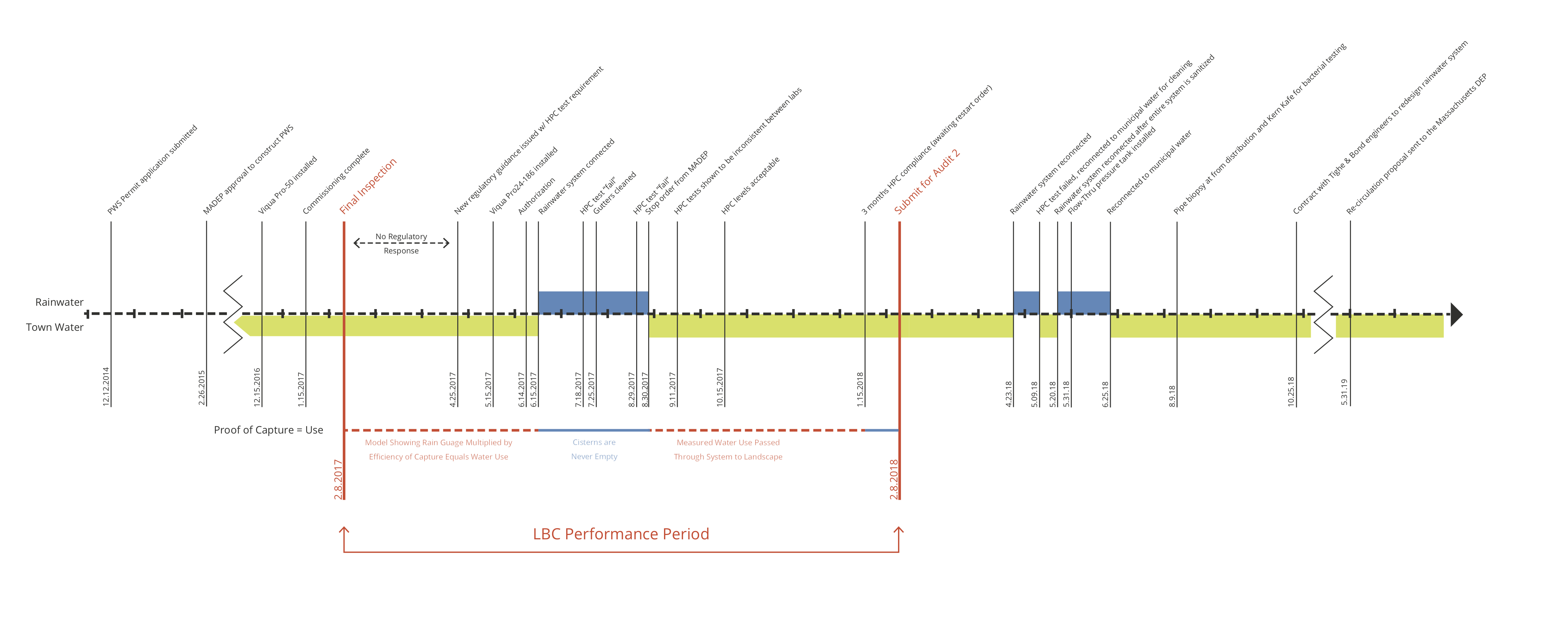
Water
The R.W. Kern Center operates as a net-zero water system, meaning that 100% of our water is sourced, processed, and managed on our site. Our water system functions within the natural water cycle of our site, rather than relying on external resources to transport water to the building and to dispose of waste off site.
Drinking Water (Potable Water)
Our building is designed to collect and treat rainwater for potable use. The rainwater harvest system collects rainfall from the roof via the gutters and downspouts. A vortex filter provides initial screening of debris, and a first-flush tank diverts the first 125 gallons of rainfall into the nearby raingardens, thereby washing the roof of dust and contaminants before collecting water for storage. The rainwater is then stored in two 5,500-gallon cisterns to await further treatment. The storage reservoir includes an overflow; when the reservoir is full, water is discharged and treated as site stormwater.
From the cisterns, the water is pumped to the basement for treatment. Filtration is provided by 1-micron and .35-micron particle filters and activated carbon filters. The final stage of treatment is UV disinfection, which kills any remaining viruses and bacteria in the water. Unlike many water treatment systems, chlorine is not used for disinfection, eliminating the risk of potentially harmful chlorine treatment by-products.
Our rainwater supply was approved as a Public Water System under the jurisdiction of the Massachusetts Department of Environmental Protection (MassDEP), and is operated under the supervision of a licensed water treatment operator. When in operation, regular testing and reports are submitted to MassDEP, in accordance with Massachusetts Drinking Water Regulations. Right now, we are on Amherst municipal water while we navigate some bacterial issues.
The fixtures in the RWKC are designed to minimize water use. Crucially, the composting toilets use no water, reducing the overall water consumption to just 150 gallons per day.

Drinking Water Timeline
Stormwater (Runoff)
Runoff from the site, including overflow from the rainwater harvesting system, is collected in raingardens on the north side of the building. These low-lying areas are planted with water-loving plants, and are designed to slowly infiltrate excess rainfall back into the ground.
Wastewater (Greywater)
Unlike many buildings, the RWKC has no sewer connection or septic tank. Instead, our greywater—the drainage water from the building’s sinks, dishwasher, and espresso machine— is treated on-site so it can be safely discharged back into the environment.
Greywater is collected and filtered through indoor planters in the building’s central common space, and through an on-site constructed wetland. First, the greywater is pre-filtered (via a grease trap and high-tech pantyhose filter) and sent to a storage tank in the basement. From there it is pumped through irrigation hose in the indoor planters, where it filters through several feet of sand and soil, and undergoes an aerobic treatment process to break down nutrients in the water. After this first phase, the greywater is collected in a second tank in the basement, where it is then pumped outdoors to a constructed wetland for further microbial action. Finally, water exiting the wetland enters a sampling chamber and is pumped to the disposal leach field. As a DEP pilot project, this innovative system has already made an impact on environmental water policy in Massachusetts.
Human Waste Disposal
The RWKC’s dry composting toilets produce no blackwater (sewage). Six straight-drop toilets connect to two composting chambers in the basement. These are sealed plastic chambers that separate urine leachate from feces. Periodic stirring by facilities staff mixes and aerates the compost, and roof ventilation ensures oxygen flow to aid in aerobic decomposition. The finished compost is removed and buried on site (though we haven’t had to empty them yet!); leachate is collected in tanks and taken to the local waste treatment plant.
Fire Protection
The fire protection system connects to municipal water, as required by local authorities.









